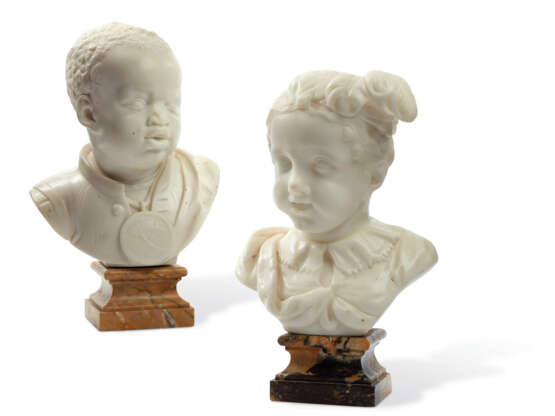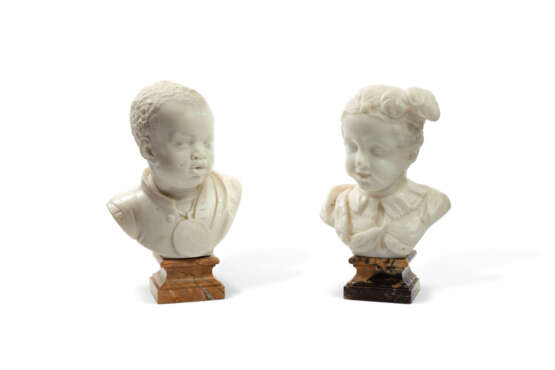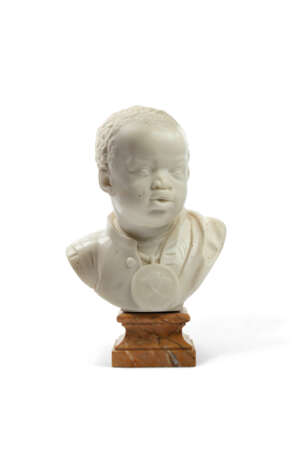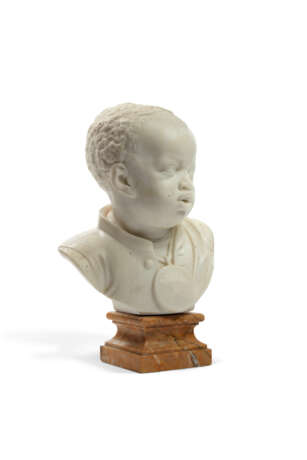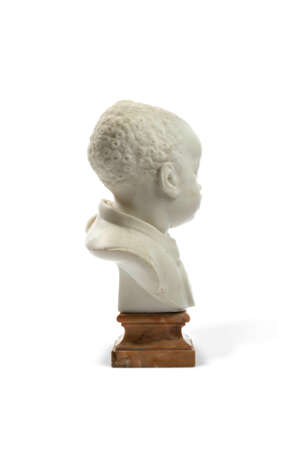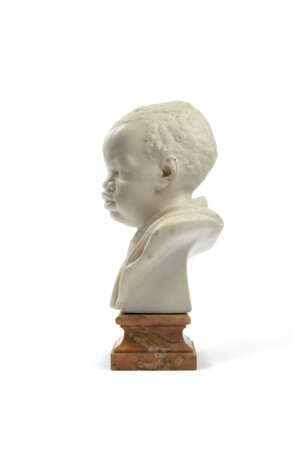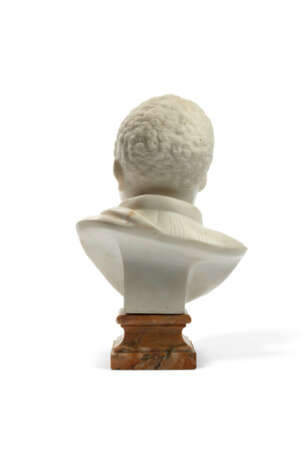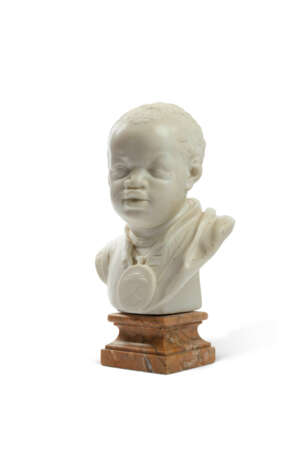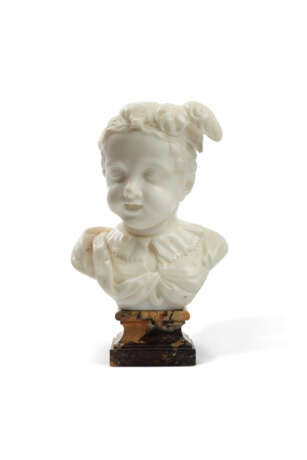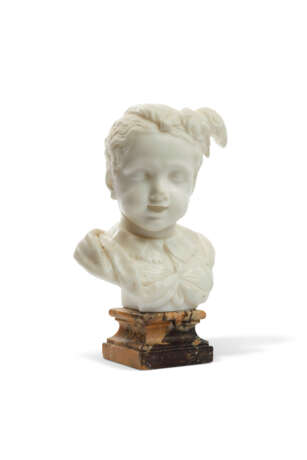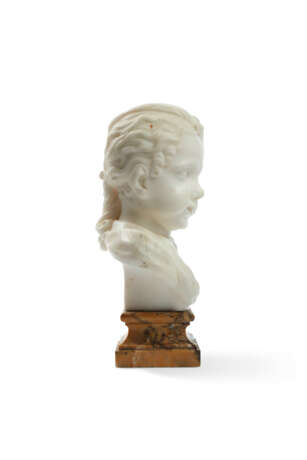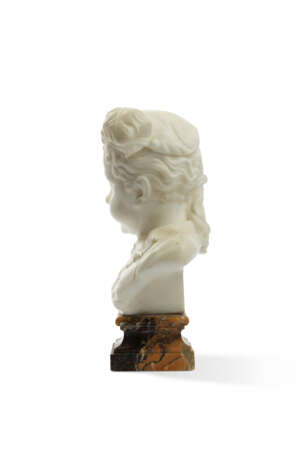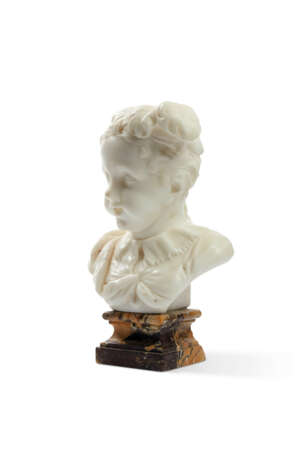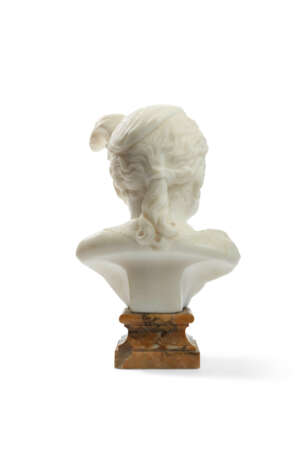ID 1071542
Lot 25 | DEUX BUSTES D'ENFANTS FORMANT PAIRE
Estimate value
€ 12 000 – 18 000
LE JEUNE GARÇON PAR L'ATELIER DE JAN CLAUDIUS DE COCK (1667-1735) ET LA JEUNE FILLE ATTRIBUÉE À AMBROSIUS GALLÉ (ACTIF 1730-1750), FLANDRES, PREMIÈRE MOITIÉ DU XVIIIe SIÈCLE
marbre blanc, le jeune garçon portant un collier à décor de galero cardinalice et la jeune fille portant des plumes dans sa coiffure, chacun reposant sur un socle carré postérieur en marbre jaune
H. 23 et 22,5 cm. (9 in.) ; H. totale 29 et 28 cm. (11 ½ et 11 in.)
Provenance
Collection Lady Lindsay née Ponsonby, duchesse de Westminster (1902-1993).
Collection particulière, Paris.
Literature
Bibliographie comparative
H. Bussers, "Enkele gegevens over de Antwerpse beeldhouwer Joannes Claudius de Cock (1667-1735)", in Bulletin des Musées Royaux des Beaux-Arts de Belgique: 1989-1991, 1-3, Bruxelles, 1992, pp. 331-342.
J. Leeuwenberg et W. Halsema-Kubes, Beeldhouwkunst in het Rijksmuseum, Amsterdam, 1973, pp. 253-254.
La Sculpture au siècle de Rubens dans les Pays-Bas méridionaux et la principauté de Liège, cat. expo. Musées Royaux des Beaux-Arts de Belgique, Brussels 1977, p. 39, no. 6.
Further Details
TWO MARBLE BUSTS OF CHILDREN AS A PAIR, THE BOY WORKSHOP OF JAN CLAUDIUS DE COCK (1667-1735) AND THE GIRL ATTRIBUTED TO AMBROSIUS GALLÉ (ACTIVE 1730-1750), FLEMISH, FIRST HALF 18TH CENTURY
This bust of a boy comes from the Antwerp workshop of Jan Claudius de Cock. The Black community in Antwerp was growing at this date as a result of the transatlantic slave trade, meaning that de Cock was able to work with models of African origin. Enslaved or sometimes emancipated men and boys of African origin worked in several European port cities. While the model may have been based on an individual, evidence suggests these renderings portray a ‘type’. Nkechi Noel writes on another version of the present work in the V&A African Heritage Guide: ‘The sculpture is a stark reminder of the loss of innocence and inhumane bondage of the slave trade, and the importance of including all of our voices in retelling collective historical narratives.’
De Cock and his workshop are thought to have produced several versions of this expressive model in various media including bronze, plaster, and marble. Versions can be found in the Victoria & Albert Museum (inv. no. A18-1913) and The Walters Art Museum (inv. no. 2053), among other collections. Of the known versions, none are identical, varying principally in the decoration on the medallion. These busts may have been carved in the workshop and then completed with a medallion decoration customized to reflect the wishes of the purchaser. The present version shows a galero or cardinal’s hat on the face of the medallion, one sold at Christie’s, New York, 10 June 2022, lot 27 was adorned with a crown, the one from the former collection of the Duc de Talleyrand had a profile after the Antique (this latter sold Christie’s, Paris, 26 November 2005, lot 288). A similar, full-length version of a young boy by Jan de Cock is in the Rijksmuseum (inv. no. R.B.K. 1972-134); this shows the figure with a headdress and band of feathers hanging on the chest with the medallion. Thanks to this sculpture, signed by the artist, it was possible to associate the group of busts with de Cock's workshop.
Representations of the same Young Girl are rare. A similar marble bust in the V&A in London (inv. no. A.42-1917) is attributed to the Flemish sculptor Ambrosius Gallé, who worked in London between 1726 and 1729, then in Munich before returning to Antwerp. It may be a mythological subject rather than a portrait.
The pair of busts belonged to Loelia Mary, Lady Lindsay, née Ponsonby (1902-1993). Daughter of Sir Frederick Ponsonby, she married Hugh Grosvenor, 2nd Duke of Westminster (1879-1953) in 1930. A notable British socialite, needlewoman, and magazine editor, she was part of the Bright Young Things, a famous group of young aristocrats in 1920s London. Her portrait was shot by the noted photographer Cecil Beaton.
| Artist: | Jan Claudius de Cock (1667 - 1736) |
|---|---|
| Medium: | Marble, Stone |
| Place of origin: | Western Europe, Europe, The Netherlands |
| Auction house category: | All other types of objects, Statuettes |
| Artist: | Jan Claudius de Cock (1667 - 1736) |
|---|---|
| Medium: | Marble, Stone |
| Place of origin: | Western Europe, Europe, The Netherlands |
| Auction house category: | All other types of objects, Statuettes |
| Address of auction |
CHRISTIE'S 9 Avenue Matignon 75008 Paris France | ||||||||||||||
|---|---|---|---|---|---|---|---|---|---|---|---|---|---|---|---|
| Preview |
| ||||||||||||||
| Phone | +33 (0)1 40 76 85 85 | ||||||||||||||
| Fax | +33 (0)1 40 76 85 86 | ||||||||||||||
| Conditions of purchase | Conditions of purchase | ||||||||||||||
| Shipping |
Postal service Courier service pickup by yourself | ||||||||||||||
| Payment methods |
Wire Transfer | ||||||||||||||
| Business hours | Business hours
|
